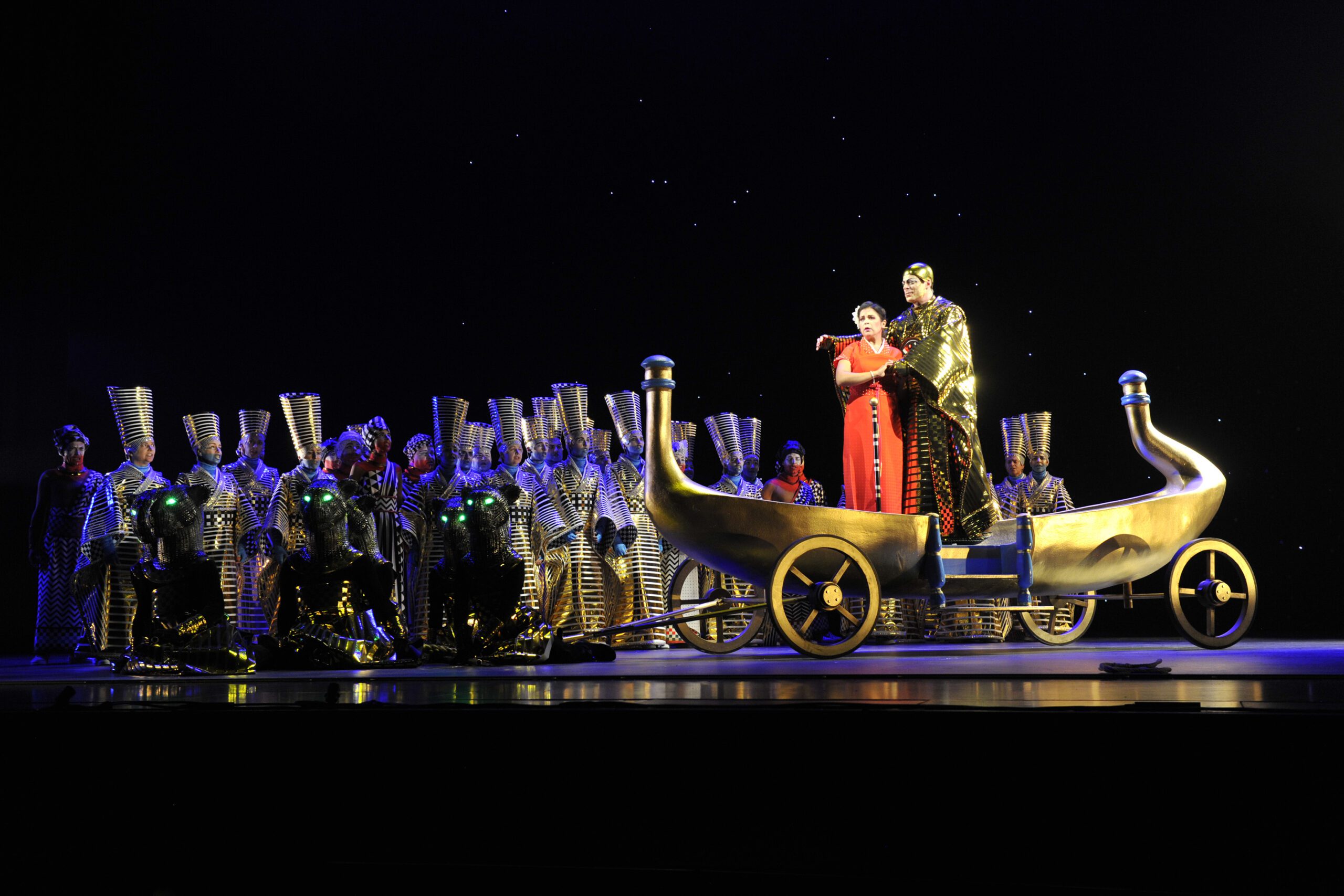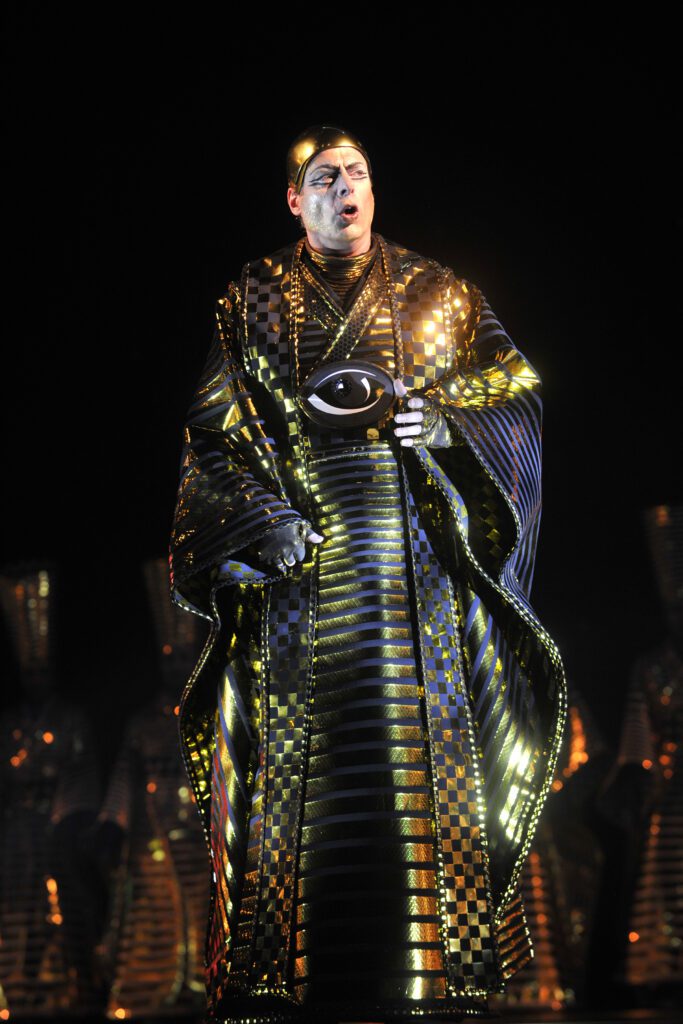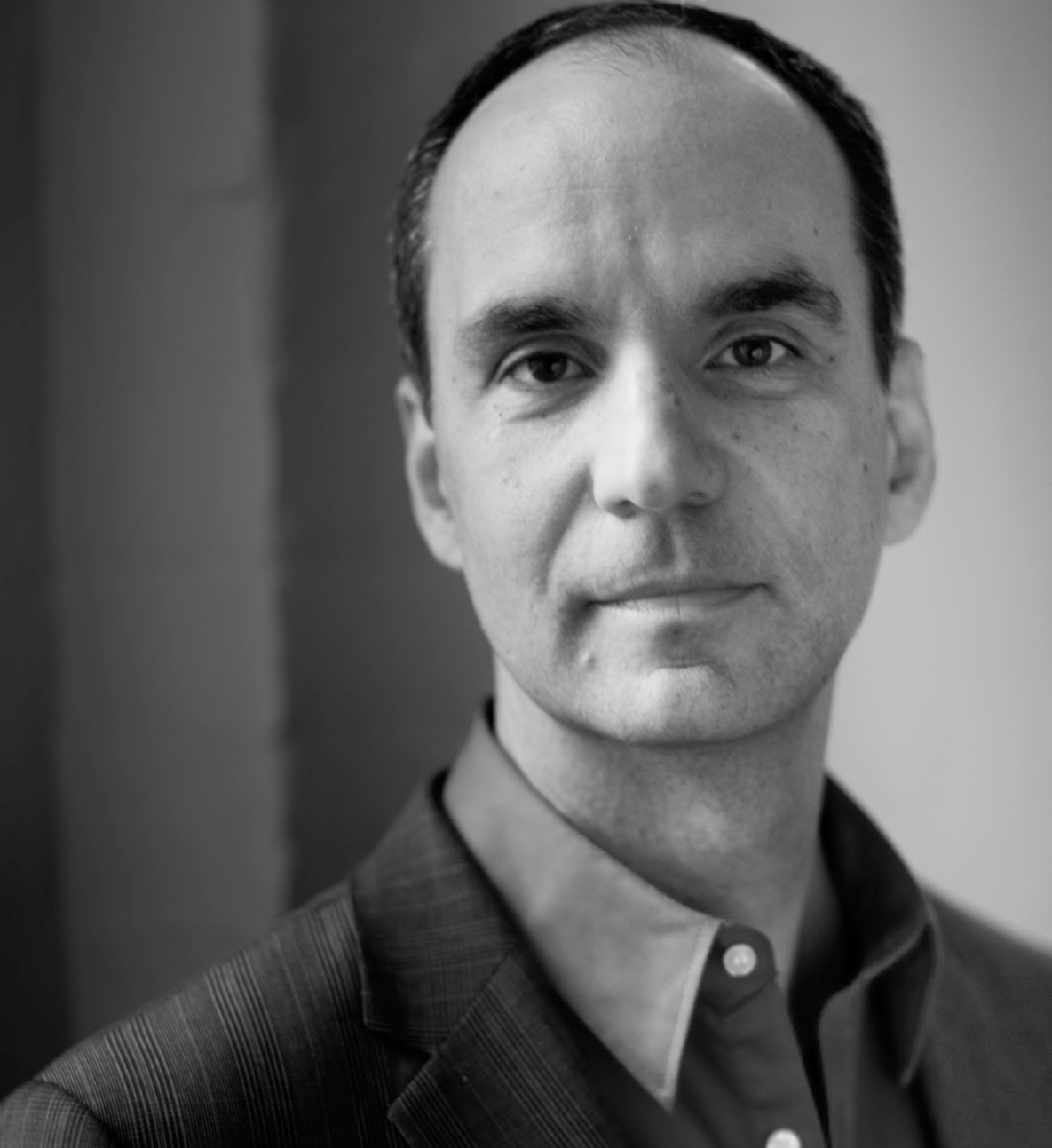The blockbuster show at this summer’s Festival d’Opéra de Québec is Robert Lepage’s new production of Mozart’s The Magic Flute (seen Aug. 2). It marks the continuation of a long, fruitful collaboration between the Québecois mega-director’s production company, Ex Machina, and the Festival beginning with Stravinsky’s Nightgale and Other Fables (2011) and continuing with Thomas Adès’ The Tempest (2012), Berlioz’s La damnation de Faust (2013) and Saariaho’s L’amour de loin (2015)—the latter three all either previously or subsequently appearing at Metropolitan Opera. This Flute is also reportedly destined for the Met, presumably replacing Julie Taymor’s beloved Lion King-esque production.
Ex Machina’s mandate is to create liaisons between the performing arts and filmmaking, video art and multimedia. Their new Flute is exceptional in this regard, marrying spectacular lighting effects with traditional ‘black art theatre’ where performers dressed in black work in a dark playing space enabling the show’s characters and props to ‘magically’ appear as if out of nowhere. So, we are delighted by Papageno’s sudden levitation; birds magically flying through the air and, the Three Spirits being whisked into place en masse or sailing across the stage on magic carpets.
On one level, this approach eminently suits what can be viewed as a basic ‘prince rescues princess’ narrative. However, in an era when the #metoo movement’s calling out and condemnation of patriarchal structures have finally reached the classical music world, one has to ask if a fairy tale reading is enough? When Head Priest Sarastro pronounces to Pamina, “A man must lead your heart, to step out of her sphere, [woman] needs a man to guide her through life,” the young Princess’s scowl doesn’t seem to be quite enough anymore. And the fact that some members of the audience still find this line to be funny indicates a little more interpretive intervention might be in order.
Despite the technological wizardry, this Flute is at heart, very traditional in its presentation. Sarastro’s coterie of imposing Priests are garbed in long, flowing robes, their authority sealed by tall Egyptian style headdresses. Sarastro sports the all-seeing Eye of Providence symbol in a decorative call-out to the historic Masonic underpinnings of the story and Mozart’s score. The costumes are fantastic, but beyond their elaborateness, do not stray too far from expectation—Papageno the bird catcher is bedecked with feathers; Pamina is garbed in pretty princess dresses; Prince Tamino, perhaps a bit more interestingly clothed in an Arabian Nights-styled outfit. One has to wonder if the production’s ultimate Met destination in some way dictated Lepage’s rather conservative approach.
There were some outstanding vocal performances to enjoy. Québec tenor Frédéric Antoun and B.C. soprano Simone Osborne were reunited as Tamino and Pamina following their 2011 Canadian Opera Company portrayals. Antoun sang with complete assurance all night, his clear, not-too-light tones projecting well in the problematic, dry acoustic. Osborne offered the most nuanced vocalism of the evening, delicately lightening her sound for some gorgeous high pianissimi and was not afraid to exercise her singer’s prerogative with well-placed fermata. Both gave exquisite renditions of their signature numbers (the tenor’s ‘Portrait Aria’ and Pamina’s “Ach, ich fühl’s”) which belied the audience’s propensity to sit on their hands all night (more on that later).
Star Canadian bass John Relyea as Sarastro intoned his two lugubrious arias with chills-inducing, warm bass tone. Saskatchewan baritone Gordon Bintner did what the best Papagenos can do, stealing the show with ebullient stage business, especially his expert miming when ‘playing’ his glockenspiel. His Papagena, Québec soprano Pascale Beaudin, was endearing but under-projected her delicate instrument in her sole vocal opportunity, the famous “Pa…pa…pa…Papageno” duet.
Not since Otto Klemperer’s famous 1964 EMI recording, which featured Elisabeth Schwarzkopf and Christa Ludwig as First and Second Damen, have such a starry, experienced trio of singers been cast as the Three Ladies. Here we had Lyne Fortin, Megan Latham and Allyson McHardy whose collective years treading the boards paid off in terms both vocal and thespian. They were exceptional in their ability to throw off the technological straitjacket that prevented the rest of the cast from projecting real, human characters who an audience can embrace. It was especially gratifying to hear Fortin, that superb Québecoise star soprano known for her Violetta, Alice Ford, Mimì, Juliette and Manon, take on a rare German role with such panache.
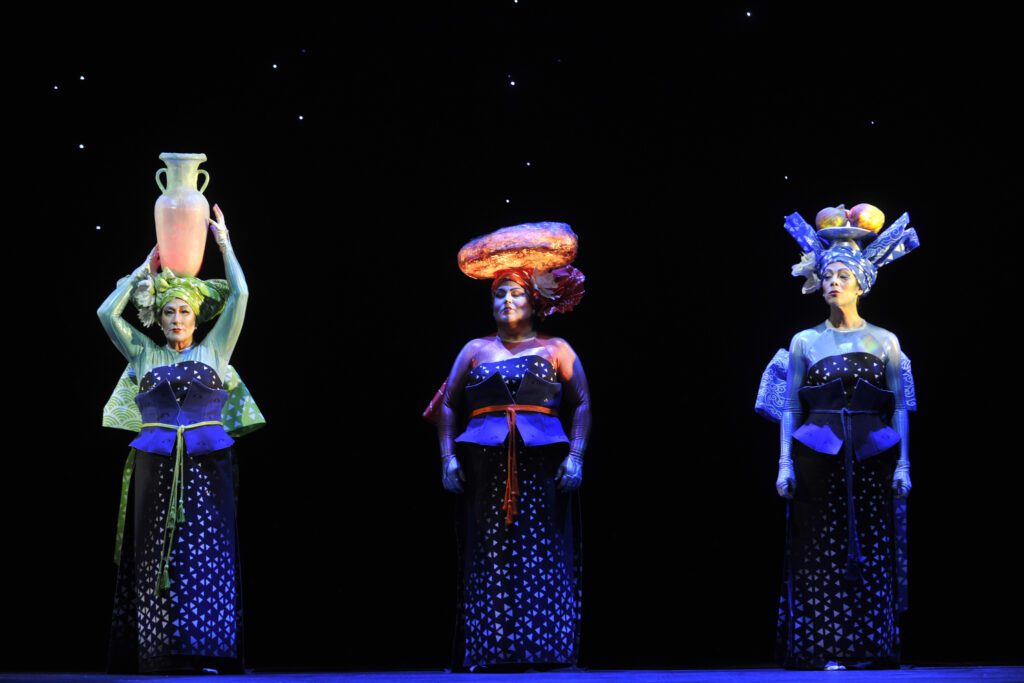
Lyne Fortin, Megan Latham and Allyson McHardy (The Three Ladies) in Festival d’Opéra de Québec’s The Magic Flute. Photo: Louise Leblanc
Calgary bass-baritone Neil Craighead really impressed as the Speaker with his rich, burnished vocalism and clearly projected German diction—among the best in this spoken text-heavy singspiel. American soprano Audrey Luna—a noted Queen of the Night and specialist in high-lying roles like Ariel in Adès’ The Tempest—seemed to be having an off-night with considerable tuning problems in her two showcase coloratura arias. Austrian conductor Thomas Rösner led the Orchestre Symphonique de Québec through a well-paced reading of the score, neither hyper-fast as is the wont with many Mozart performances these days, nor overly ponderous. The Chœur de l’Opéra de Québec sounded good, though from my seat, the bass line was under-projected during the Priest’s chorus.
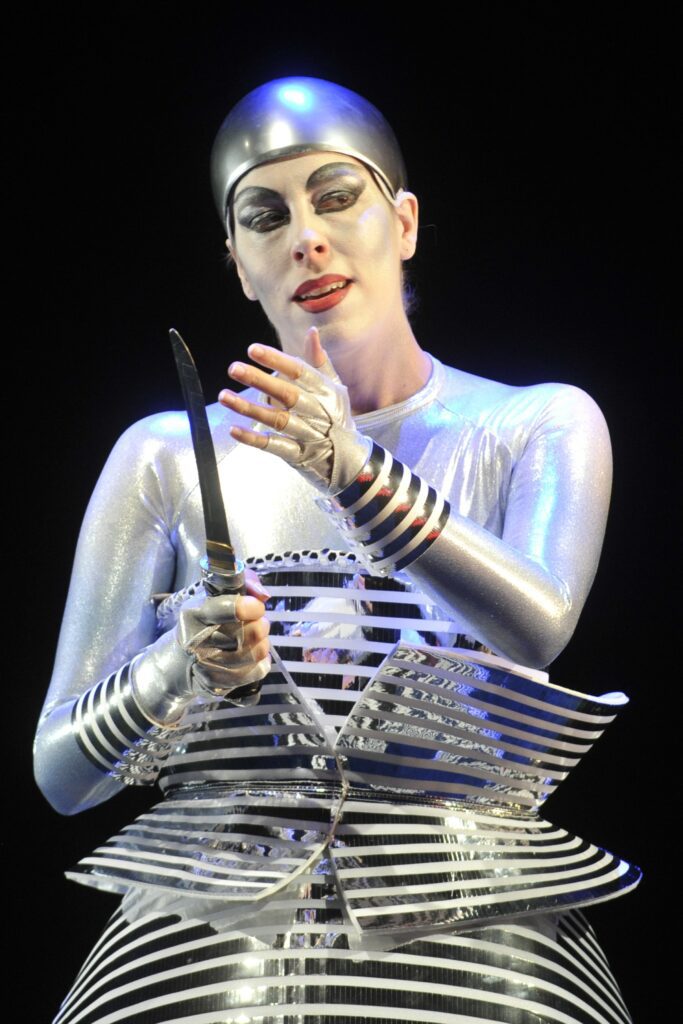
Audrey Luna (Queen of the Night) in Festival d’Opéra de Québec’s The Magic Flute. Photo: Louise Leblanc
As previously hinted, audience reaction was tepid throughout with little to no applause after most of the arias and ensembles. This changed however when Lepage made an unexpected appearance at the end of the curtain calls (highly unusual for a director after opening night). Any previous aversion to showing their appreciation was abandoned as a large roar greeted the hometown star, whose Ex Machina workshop is only a few blocks away from the Grand Théâtre de Québec in the city’s picturesque old port quarter. Given Lepage’s troubles of late with the shutdown of his shows SLĀV (in Montréal, over its non-inclusion of black performers in a piece featuring black slave songs) and Kanata (in Paris, for a similar lack of Indigenous input and actors in a play about Canadian Indigenous history), this ovation felt like an approbation. A largely hometown crowd voiced its support for one of their most beloved artists, seemingly unperturbed by or unquestioning of the problematic politics that have plagued him as of late.

